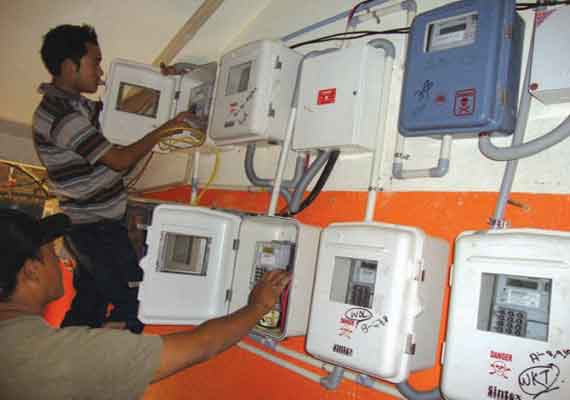By Esha Roy

Full
circle Child meets the descendants of the warrior who adopted her
mother, Ursula Graham Bower, at Magulong; (below) Child and with her
mother and sister Allison in England, in traditional Naga attire
Her daughter travels to Nagaland to retrace the fascinating journey
of Ursula Graham Bower, the British woman who made her home in these
hills in the 1940s, learning the ways of the Nagas, and leading them
against the Japanese during WWII
It was an arduous journey for 62-year-old Catriona Child. A flight to
Guwahati from New Delhi, a train to Dimapur, a night halt and then a
15-hour drive across the sparsely inhabited Peren district of Nagaland.
But as she rode through yellowing fields of tall reed encircled by
bluish mountains; as she hurtled and slipped while climbing slushy
mountain slopes on foot, and hitched rides on dilapidated World War II
trucks and newer gypsys, on her way to the remote village of
Magulong on the Manipur-Nagaland border, she was also coming home.
At the entrance to the village, children stood in a line,
welcoming them with a song sung to the tune of God Save the Queen. "They
had been waiting for us for several hours," says Child, who was
accompanied on her journey by a group of friends and cousins. As was
their tradition, the villagers offered to carry their guests in but when
they protested, they tied a rope to the front bender of the gypsy and
pulled it all the way to the church at the centre of the village.
With that, Child had travelled through an arc of time — Magulong
was where her parents Ursula Graham Bower and Colonel Frederick
Nicholson Betts were married by Naga rites over 60 years ago. Her
mother, the amateur anthropologist who lived for several years with the
Nagas, whose life and customs she was documenting in the 1940s. Her
mother, whose image was splashed on the cover of Time magazine in 1945,
celebrated as the woman who led a squad of Naga warriors against the
Japanese during World War II.
Graham Bower, who was described by her mother to the Time
magazine, as one who "never would sit still", arrived in Assam in 1936, a
disappointed woman. Having fought all her life to be sent to the best
private schools in England, the 22-year-old had been denied a chance to
study at Oxford because of a financial crunch at home. "She felt that
her life was over. Till a friend, Alexa Macdonald, whose brother was an
Imperial Civil Service officer recently posted in Manipur, invited her
to
join them. My grandmother, who never understood my mother's ambitions, felt it was
a good thing and that she would find a husband here. Instead my mother found the Nagas," says Child.
In the beginning, Graham Bower, a plump, academic woman, did what
other white women of the Raj did — shop at a bazaar in Imphal or watch a
polo match on a sunny afternoon. Then, on a trip to Kohima, she spotted
the muscular Nagas for the first time, in their traditional kilts and
ornaments. Graham Bower would tell Child much later that she felt a
strong connection with these mysterious people, a sense that her destiny
was tied with them. She began visiting Naga areas and photographing
them. When she went back to London and showed her anthropologist friends
the photographs, they encouraged her to return to finish the work she
had started.
Between 1939 and 1946, Graham Bower travelled to remote villages,
helping the people with medicines and rudimentary medical care, as well
as photographing them and documenting their traditions. She spent many
years among the Zemi Nagas, the object of her study, in Laisong village
in north Cachar, Assam.
In 1942, thick in the middle of World War II, her presence and
familiarity with the villagers was a strategic advantage for the
British, who did not have many friends among the local, often hostile,
tribes. "Maybe, because she was a woman and not an official, people
began to accept her,'' says Child. Graham Bower's medical kit had become
popular among residents. There were few antibiotics available, so the
medicines she carried would be the only care they had for sores, fevers
and infections. Over time, she developed an unshakeable bond.
When the Japanese army invaded Burma in 1942 and threatened to
push forward to India, she was recruited by the British to scour the
jungles for the enemy. Bower mobilised the Nagas against the Japanese,
placing herself at the head of a formidable band of 150 warriors, armed
with ancient muzzle-loading guns. She herself would carry two sten guns.
They came to be known as the Bower Force, for rescuing wounded Allied
pilots and ambushing enemy missions.
It was in the hills that she met Lt Col Frederick Nicholson
Betts, a fellow adventurer, who she married in 1945. The newly-married
couple set off toward Magulong a year later to meet the tribes in
"Manipur State, outside British India and 30 miles off across forbidding
hills". First down into Jiri valley, over a steep hill, climbing over
Maovam in lashing stinging rain and running down hills to finally reach a
camp where the headman of Magulong, Khutuing, was waiting for them. He
was carrying a ge-ze — a human hair-tufted shield and two long strands
of human hair in his two ear lobes — a sign that he had taken the head
of a Kuki. It was from Khutuing that Graham Bower learnt the
headhunter's war cry. "My mother really loved them, as Magulong was a
warlike village, very much like Khonoma, where the Angami (tribe)
lived,'' Child says.
In her 1952 book, Naga Path, an account of her life in the hills,
Graham Bower writes of her second wedding in this village. "Tim and I
had been married, the village knew, by the sahib's laws and rites. But
there ought to be more. It was right that I, who was a Zemi, should also
be married by tribal rites as well — the only rites that the Zemi
recognised. Magulong, therefore, proposed to see it done." Not only had
the Zemi accepted Graham Bower as one of their own, but she had also
started dreaming in their language, believing herself to be one of them,
says Child.
For the ceremony, Khutuing adopted Graham Bower as his daughter
and another family of warriors adopted Betts. There was singing and
dancing and drinking till the early hours of the morning. A villager
stumbled upon a bear in the middle of a field and speared it. He said he
had killed it on behalf of Betts, in honour of his bride Asaipui, or
the queen, as she was known by the Zemi.
Child is here to visit the two families who adopted her parents.
Over a meal of meat, boiled greens and rice beer, she tells Gobi and
Rimzam Disuang, 88 and 85 years respectively, the descendants of
Khutuing, "I only have a sister, no brothers. You are my Naga
brothers.''
Rimzam was six when Graham Bower first came to Magulong village,
now in Manipur's Tamenglong district. "We had never seen a white person
before and were frightened. She had different skin, hair, eyes, ears.
She was so big! One of her thighs was the same size as a child. We all
ran away. Then she took her gramophone to a small knoll in the middle of
the village. There she started playing music. We went up to the knoll
and looked around for the person singing the song. But there was no
singer. Only a box from which these songs emanated in a strange
language. One of the gaon budas (village elders) warned us. He told us not to listen to these songs as they would attract us and convert us to a strange religion,'' recalls Rimzam.
Child first came to India in 1986, intrigued by her mother's
stories, and tried to visit north Cachar.
"But there were many
restrictions then and I was turned away. I never told my mother I was
attempting the trip. When she later found out, she was furious, first of
all because it was a dangerous journey to make at the time and also
because she was jealous that she couldn't be with me," says Child. It
was only much later in 1996, after a decade of building contacts, that
she met the Nagas from Magulong in Shillong.
A freelance writer and editor, Child is now documenting many of
the dying traditions and folklore of the area. "I am worried that with
the onslaught of modernity, the traditions will disappear. At some point
I plan to write a book on my journey, just as my mother did,'' she
says.
Child recalls that three villages were particularly dear to
Graham Bowers — Laisong, Magulong and Asulu. "Not only did I want to
come to the village that married my parents but also climb Mount Kisha
which my mother spoke so much of and wrote about in her book. The
villagers believe that there are spirits on the mountain guarded by the
god, Kisha. Even my father, who was an ardent biologist, said that when
they had climbed the mountain before their wedding, he heard strange
cries that he could not attribute to any animal he had ever known,'' she
says.
The mountain, which is estimated to stand at 1,462 m, lies on the
Nagaland-Manipur border. Its north face falls in Nagaland, while the
other side drops precariously into a clearing where Magulong village
sits quietly, forming the northernmost periphery of Manipur and linked
by a new muddy road to the world. Time stands still here. Rice is grown
in the flat lands at the drop of the ranges, water is collected from the
river which forms a natural boundary between the two states and
hunters, armed with guns and slings, travel into its forests to bring
back birds, porcupine and jungle fowl. There are no grocery stores, no
modern amenities, just thatched huts and a church around which village
life revolves.
Soon after India won its Independence, Graham Bower and her
husband left for Kenya, where Child was born. She never returned to
Nagaland after that.
Graham Bower died in 1988, two years after Child's aborted trip
to the hills. The villagers of Magulong and Laisong had got in touch
with her a while ago. "She wanted to do something for them,'' says
Child. After her death, Child gifted the two villages Rs 2.5 lakh each.
Laisong used the fund to build a guesthouse and a recreation centre for
its children. Magulong used half the amount to set up an annual award
for its best student, the other half to buy traditional attire for its
cultural performances. "That my mother would really have approved of.
She loved the dances of Magulong,'' says Child.
PICS DEEPAK SHIJAGURUMAYUM


















 Full
circle Child meets the descendants of the warrior who adopted her
mother, Ursula Graham Bower, at Magulong; (below) Child and with her
mother and sister Allison in England, in traditional Naga attire
Full
circle Child meets the descendants of the warrior who adopted her
mother, Ursula Graham Bower, at Magulong; (below) Child and with her
mother and sister Allison in England, in traditional Naga attire



 People of three villages of Nagaland have made a pledge to protect and conserve the migratory Amur falcons.
People of three villages of Nagaland have made a pledge to protect and conserve the migratory Amur falcons.  Siberia.
Siberia.



